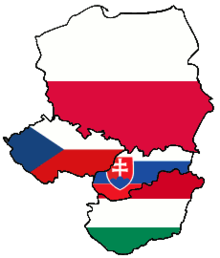clear
What holds V4 countries together?
clear

source:
No picture
clear
 Eduard Marček
7 years, 2 months ago
Eduard Marček
7 years, 2 months ago
Mainly geographic location. And poverty.
Głównie położenie geograficzne. I bieda.
 2
2
clear
Established following the collapse of the Soviet Union, the so-called Visegrad Group came into being in 1991 as a 'triangle' of three former Eastern Bloc republics - Czechoslovakia, Poland and Hungary. Two years later, when Czechoslovakia split into the Czech Republic and Slovakia, the V4 countries came into being.
They are held together by a number of aspects, especially their economic aspirations. In the quarter of a century since the collapse of communism all four have been enjoying a steady economic growth. This is reflected in the fact that the V4 countries are now Europe's fifth largest economy (and the world's 12th largest.) The International Visegrad Fund is an organisation collaborating between the four countries. Its yearly budget of EUR 8 million operates 11 deadlines per annum, issuing grants and research fellowships. As well as benefitting V4 citizens, these funds are often allocated elsewhere in Eastern Europe.
Domestically, the V4 nations cooperate at ministerial level on a range of subjects, such as energy policy, natural gas storage, construction of pipelines and connecting power grids. They also hold regular military exercises under the overall supervision of the NATO Response Force.
 0
0
clear